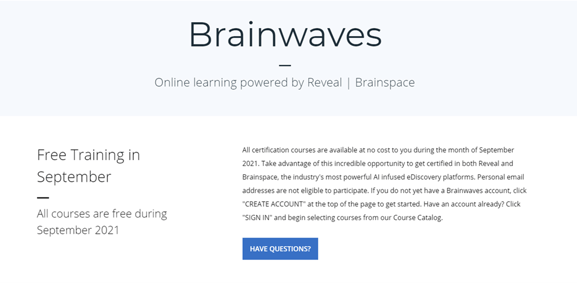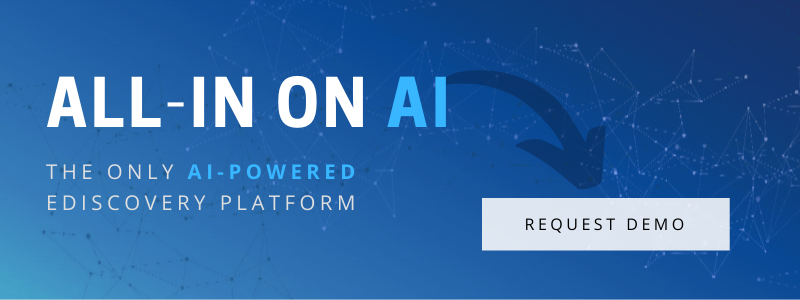How I Learned to Stop Worrying and Love Legal AI
There is a major lag in adoption of Legal AI in the legal industry today. Some may find it comical to surmise that legal practitioners from lauded rainmakers to first year associates are simply luddites, but that is missing the bigger picture. The reality is that lawyers are not wired, nor taught, to embrace the novel without thorough analysis. Legal professionals are by their nature a skeptical bunch with a tendency for risk aversion and a mind trained to run through all possible worst-case scenario options so they do not make for the most willing group of professionals to adopt tech enabled solutions that are novel or unfamiliar.
With the right guidance and information, even the most unwilling Legal AI user can embrace the new technology to achieve the massive time, cost and accuracy improvements it offers. The first step is to understand why lawyers have been turning their collective noses up at Legal AI and to counter the preconceived negative impressions with proof positive of the error of their assumptions. In my case the journey was not a short one, but the path from wariness to trust started by busting the myths that were holding me back from embracing the superior, tech enabled, future of law.
Less New Kids on the Block, More Rolling Stones
One reason for avoiding legal AI stems from a mistaken assumption that the technology powering it is somehow novel or unproven. This simply is not the case. The underlying concept of the “science and engineering of making intelligent machines” was first discussed over 60 years ago, when John McCarthy had a vision that “every aspect of learning or any other feature of intelligence” could be replicated by a machine. Quite literally, he saw a future where machines can and will do anything a human can do.
In the half a century since the concept of machines capable of learning first emerged, industries from banking to medicine and even retail have widely adopted a multitude of AI powered applications. And the tech itself has made massive leaps forward, evolving from the concepts of replacing human cognition to one more centered on augmenting or amplifying the humans that use it. By contrast, the legal industry’s application of legal AI is much more modest in scope, and the underlying tech is less cutting edge and more tried and true.
But just because the technology that makes up legal AI is not the newest kid on the block, that does not make it rock any less in terms of accelerating time to insights and supercharging the lawyers and legal practitioners that wield it.
Less Fear of the Unknown, More FOMO

Another common hurdle to adoption of AI for many is the simple lack of familiarity and comfort with technology that may not have existed (or been explained) during law school or even in their early years as an associate. Many legal practitioners, including myself, self-selected themselves away from advanced statistics, engineering and mathematics in school as they increased focus on linguistics, liberal arts and in some cases philosophy or debate.
Does this mean that by their nature legal professionals are less tech savvy or mathematically acute? Most certainly not! It does, however, mean that legal professionals may have over indexed on the things they were great at and, over time, had less and less exposure to more STEM centric or tech heavy things in their post-secondary education and early careers.
It has been posited in recent academic papers that “Fear of the unknown” might be the “one fear to rule them all”… a foundational component of all the fears that drive human behavior. So, it should really come as no surprise that a profession teeming with brilliant minds that have been less than inundated with technology and hard math might have an aversion to the unfamiliar, even if it seems normal, or even old, to many others.
What does a legal technologist to do? The answer is simpler than you might guess. Find the hero stories and champions within your organization or across the industry that can help make the unfamiliar less so and can articulate the benefit in terms that make sense to your team and clients. These wins and war stories and cheerleaders of tech are more than just good for the ego of the early adopters, they are critical to converting the fear of the unknown into an equally powerful motivator, the fear of missing out - FOMO.
The more tangible wins, client success stories, and raving fans you can develop and showcase, the more the warry legal professionals' suspicions will begin to shift toward the positive. The logical mind of legal professionals may be wired to critically analyze and view new unproven tech with some degree of apprehension, but it is likewise wired to consider new facts and evolve the calculus as new information and points of proof are surfaced. Simply put, tip the scale in the favor of embracing tech by highlighting how and when it helps amplify legal peers or even competitors!
Not so Black Box
The earliest entrants of legal AI in the eDiscovery game did legal professionals no favors in setting the stage for adoption. The process was onerous, involving multiple rounds of training and complex calculations of statistical concepts like precision and recall to determine efficacy. The deployment was not judicially validated, and it required teams of statisticians, linguists and deeply tech fluent attorneys to undertake the new programs. To the tech savvy lawyer and luddite alike the process was more black box than not and the idea of having to articulate the process before a judge who may or may not have any technical understanding was indeed a daunting ask.
Thankfully, Legal AI has evolved substantially in the last decade and a half. The process of using legal AI has gone from a bespoke and expert driven “AI workflow” to one with AI baked into the normal course of conducting eDiscovery. Additionally, the level of judicial understanding has evolved substantially. Next gen legal AI has incorporated many of the more common features that consumer grade AI offers today, including seamless integration, intuitive user interfaces and simple workflows that everyone from my 5-year-old nephew to the rainmaker in the corner office can easily understand and master.
The net result is transparent, easily employed and explained technology that saves massive amounts of time and money on any review, from the simple to extremely complex. If Model Rule 1.1 around technical competence are any indication, the Bar and bench alike are embracing legal technology and expect legal practitioners to employ, or at minimum evaluate, using advanced legal tech to support proportionality and accelerating time to evidence.
Not so Risky Business
Along with the fear of the unknown, another major barrier for adoption lies in the perceived risk of using the new technology. This skewed risk calculus is a combination of the unfamiliarity of the new tools and the misplaced belief that human review and analysis is the “gold standard” by which to measure the tech by. The reality is that study after study has found human review to not only be far from a gold standard, but actually rife with inconsistency, latency and downright inaccuracy.
Given the increased cost and time of brute force human review and the far lower levels of accuracy, the riskier choice in many cases is NOT using AI powered next gen technology to quickly surface evidence and insights.
Using next gen tech like Brainspace or Reveal AI in conjunction with brilliant legal minds enables case teams to find more evidence in a fraction of the time and cost of a linear review. At a time when the bench is increasingly focused on proportionality and cost containment as well as demanding greater technical competence from the practitioners before it, the bigger risk lies in avoiding legal AI.
Shrinking the Knowledge Gap
As noted above, the path to becoming a standout legal professional for many did not incorporate a heavy dose of STEM courses or immersion in computer science, and this lack of familiarity has fed into the paranoia and fear of the unknown that plagues the legal industry. Along with finding and highlighting legal AI champions and success stories, another way to bridge the adoption gap starts with making the “unknown” more known.
As I have noted in a past Law.com editorial, “while law school is brilliant at teaching critical reasoning and how to “think like a lawyer”, the current approach to educating attorneys leaves them woefully unprepared to face the realities of practicing law today.” So, what does the aspiring, tech savvy legal professional do? Find ways outside of law school to start bridging the gap!
Just because law school is behind the curve in embracing the tech that powers legal today does not mean that law firms and clients alike are not looking for legal professionals who can use technology as a force multiplier. Quite the opposite. To meet this evolving expectation and keep pace with the lawyers who are embracing technology to get a leg up I recommend voraciously reading legal periodicals, peppering your network with questions and leaning on your technology partners to provide access and certifications in the tech that is reshaping the practice of law.
Share a Common Vision
The volume, variety and velocity of data is growing exponentially and shows no signs of abating. The way that humans live, work and play is decidedly entangled with the technology that connects us. From social media to short form communication, video chat to more traditional email, humans are saying more across these social platforms and data formats than ever before. And yet timelines and budgets have remained unchanged or even tightened. As a result, it has never been more important to have a way to surface key facts and evidence quickly. And with the myriad of data formats, the mountainous volumes and the non-traditional manner of communication today, making those connections is often beyond the grasp of mere mortals.
Thankfully we do not need to leap a mountain of data in a single bound or stop a speeding ESI request alone, we have the tools to help cut the time spent to reach valuable insight and make connections between people, communication formats and concepts in a superhuman way. From social network analysis that can tell us which custodians are speaking across which platforms and at what frequency, to more advanced concept searching that can make connections across terabytes of data and even story build to help identify patterns that no mere mortal could find alone, the tools are at our fingertips to meet this ever-increasing need for speed.
Don't Have to Break the Bank
Now you might assume from the massive impact that Legal AI can have on saving time and money in uncovering key evidence that you must have a massive budget or only the most complex case to merit leveraging it. And that is where you would be wrong! Early applications of Legal Ai in eDiscovery were indeed costly, in terms of both time to ramp up and raw cost to employ. Many legal tools still charge an arm, a leg and your first born to use Legal AI on a matter.
But next-gen legal technology companies like Reveal understand that the future is most certainly legal AI enabled and are removing the cost barrier to embracing the game changing technology completely. By offering all-in pricing that includes use of all the flavors of Legal AI, these next gen players are going all-in on AI to supercharge the practice of law.
Legal AI is too hard
In the earliest iterations of Legal AI for eDiscovery, there had to be a separate AI workflow with unique experts and a totally different approach than traditional linear review. For many this wholesale change was too big an undertaking to make in all but the most complex and voluminous of matters. The amount of hourly expert billable time and disruption to the traditional workflow combined with the ramp up time necessary to create a seed set and train it across the universe of data was simply too daunting a task for all save the most ambitious of practitioners.
Thankfully as legal AI has evolved over the last decade the formerly standalone technology and differing workflow required to capitalize on its benefits have both fallen to the wayside. Today, next gen Legal AI is seamlessly integrated into both the traditional eDiscovery workflows and the platforms that practitioners rely on to uncover patterns, insights and evidence in an increasingly complex universe of data.
Unsupervised learning fueled data visualizations like concept clustering and social network analysis require no human input to provide compelling insights from an unfathomable amount of data. More advanced active learning AI powered by both supervised and reinforcement learning require a fraction of the documents legacy Legal AI required to start making before even just making recommendations on how to categorize documents.
In some instances, practitioners may not even be aware they are employing advanced and powerful AI in a review and may simply marvel at the improved insights and reduced time to evidence they encounter. Intuitive toggle on AI powered active learning and a Netflix easy to use model library make using AI so easy a lawyer actually wants to do it. With the now seamless integration into next gen legal AI platforms makes the impact on an eDiscovery matter’s workflow nominal at worst.
The net result is that AI has become much like the vast universe of consumer grade AI that we encounter each day, seamless, intuitive and barely noticeable save for the superior information and insights that are at our fingertips.
How do YOU Jump on the Legal AI Train?
The barriers to AI adoption may at first seem insurmountable, until you unpack them one at a time and realize that many of your own internal misgivings relate to an older, long since retired approach to legal AI. As with AI in our daily life, Legal AI is more nimble, intuitive and user friendly than ever before. The cost of the status quo combined with the risk of error and missed deadlines is making going it alone, without the growing benefits of legal AI less and less logical.
Savvy clients and employers alike increasingly expect the best and the brightest and entrust them with their most pressing legal matters while expecting their team to use ALL the tools at their disposal, most especially including AI powered legal technology tools. Luckily if you are behind the curve on getting your Legal AI T’s crossed and I’s dotted, there are some simple things you can do to bridge your own legal AI gaps. To keep pace with the lawyers who are embracing technology to get a leg up I recommend the following:
● Read the legal tech blogs and articles
● Get Certified (did you know Reveal is offering free certification all September?)
● Talk with your legal AI Sherpas - Find mentors and mentees, and ask them questions
● Talk to your tech partners and get demos and even deep dives
● Try it (legal AI) before your buy it through partners
● Reach out to your internal tech champions (lawyers and technologists alike)
● Stay curious!



